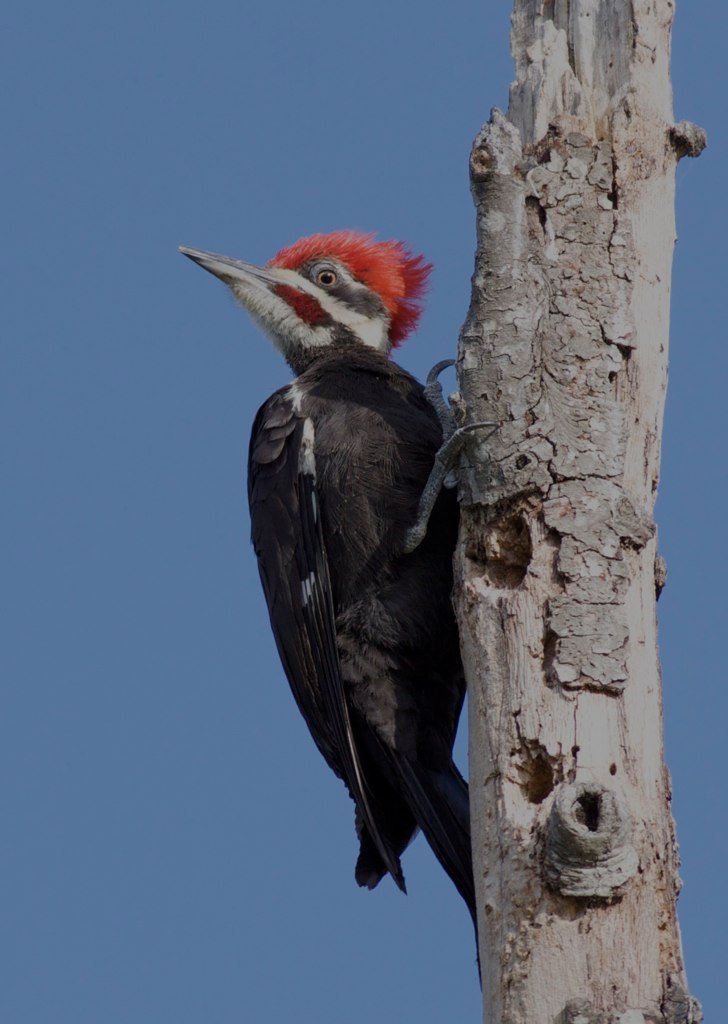At Faville Grove, the woods, prairies, and wetlands have grown quieter as more and more of our fair-weather avian inhabitants have left on their journey southward. I can’t blame them, seeing as the bite of a winter wind on a nine degree morning, such as we had this past week, is a bit of an acquired taste. However, an ever dependable sound of winter is the drilling, drumming, and knocking of our industrious non-migratory woodpeckers. Charisma and conspicuousness is a recipe for intrigue, and woodpeckers have these in excess. I always take solace in the company they provide on winter days in the woods and spotting them in the branches overhead after hearing their pecks is always a fun challenge. If you find yourself walking through the Ledge Savannas or Faville Woods, keep an eye and ear out for these beautiful birds.
One especially eye-catching species is the Pileated Woodpecker, the largest North American woodpecker. Sporting a blaze-red mohawk and dinosaur-esque profile, they command attention as they excavate trees. In Wisconsin, they’re found in southern uplands, northern boreal forests, swamps, bogs and mesic forests across the state. At Faville Grove, you may encounter them in Faville Woods or the Favanna, the block of oak savanna southwest of the Kettle Pond off Springer Road. Anywhere in the sanctuary where a grove of oaks or hickories juts from the prairie, a Pileated Woodpecker may find themselves assessing the scene. Other areas in the southeast portion of the state where they may be found include the southern unit of the Kettle Moraine State Forest, Cedarburg Bog State Natural Area, and Kewaskum Maple-Oak Woods State Natural Area. Another good area for spotting them are the forested tracts of the Baraboo Hills, where mature oak woods provide ample nesting and forage.
Pileated Woodpecker (photo by Arlene Koziol).
This species has made a comeback in the state since the early 1900s, and prefers forests with large trees with suitably large nesting cavities. Studies have found average nesting cavity diameters to be 6–8 inches, and nesting tree diameters of 12–40 inches DBH (diameter at breast height). Interestingly, the decline of the american elm due to dutch elm disease is thought to have aided the species recovery in the state, due to the increased nesting and foraging opportunities afforded by the countless dead standing trees. Insert thoughtful meditation on the circle of life here…
If you hear a resonant drumming coming from the trees, you’re likely hearing a Pileated Woodpecker in action. Both sexes will drum for a number of reasons throughout the year, including claiming and defending territory, and courtship. They are generally vocal birds, often making a series of piping chirps between trees, changing intensity and emphasis throughout the call. Despite their size, locating them after hearing them is not always so easy, a testament to the otherworld they inhabit in the sprawling treetops.
Written by Tucker Sanborn, Faville Grove Sanctuary resident land steward
Cover photo by Phil Brown. A Pileated Woodpecker emerges from a tree cavity as wood chips scatter.






